11 Herbs to Grow Indoors Once Outdoor Temperatures Drop
As the weather cools, it’s the perfect time to bring your herb garden indoors. Growing herbs inside allows you to enjoy fresh, flavorful additions to your meals all year round. With the right care, herbs like basil, parsley, and rosemary can thrive indoors, offering a steady supply of homegrown flavor. Whether you’re a beginner or an experienced gardener, these herbs are easy to grow and can be a great addition to your kitchen.
This post may contain affiliate links, which helps keep this content free. Please read our disclosure for more info.
Basil
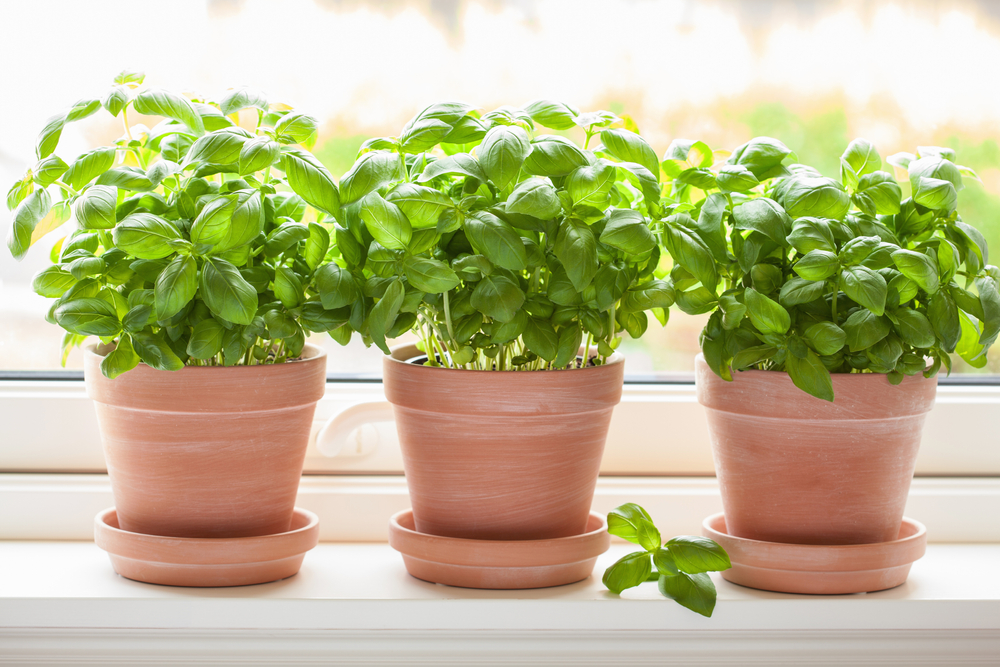
Basil is one of the most popular herbs, and it’s not hard to see why. Known for its distinct, aromatic flavor, basil adds a fresh punch to a variety of dishes, from classic pasta sauces to creative salads. It’s especially suited for indoor gardening when outdoor temperatures drop. Basil loves warmth, so bringing it indoors ensures that it can continue to grow and thrive even when the weather turns cold. To keep it healthy, place it in a location with plenty of sunlight, preferably around six hours a day. A south-facing window is ideal to give basil the energy it needs to grow strong and vibrant.
In terms of care, basil prefers well-drained soil, so ensure the pot you use has drainage holes to prevent water from collecting at the bottom. It also likes its soil to be kept moist, but be mindful not to overwater, as this can lead to root rot. Additionally, basil requires good airflow to prevent fungal infections, so avoid placing it in a humid spot with little ventilation. As the plant matures, it may start to flower, which can make the leaves less flavorful. Regularly pinching off the flowers will help maintain the herb’s strong flavor, ensuring a constant supply of fresh basil for your kitchen.
Parsley
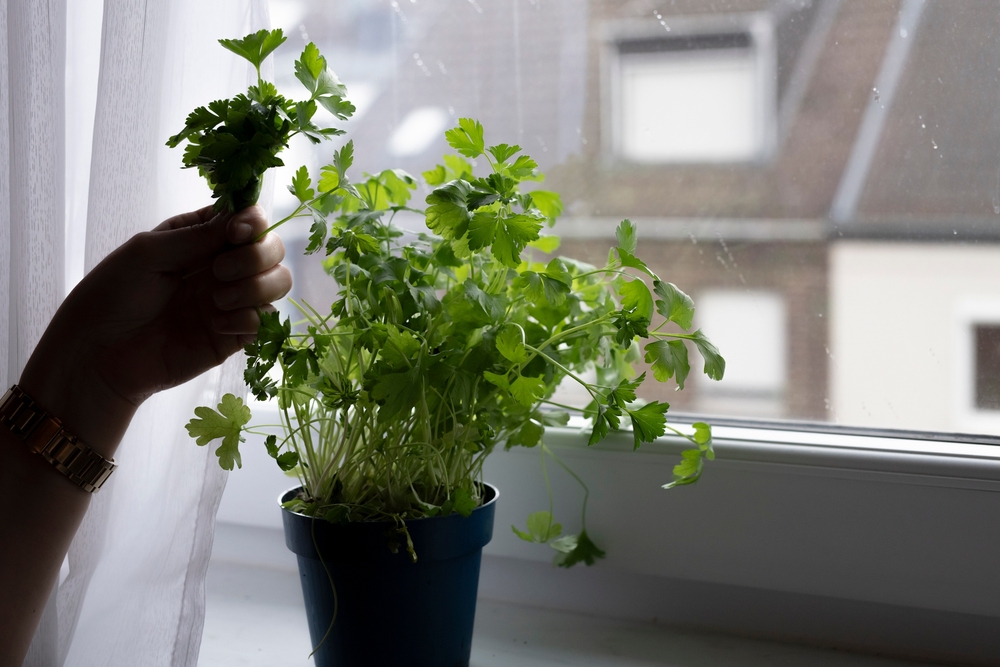
Parsley is a versatile and hardy herb, making it an excellent choice for growing indoors as the weather turns cooler. Unlike some herbs that are sensitive to temperature changes, parsley is a biennial herb that can adapt well to indoor conditions. It grows well in containers, so you can easily bring it inside when outdoor temperatures drop. For the best results, place parsley in a location that receives bright, indirect sunlight. A windowsill that gets consistent light throughout the day will encourage healthy growth. If sunlight is limited, you can supplement with a grow light to ensure the plant gets enough exposure.
Parsley does well in moist, well-drained soil, but it should not be overwatered. Keep the soil damp, but ensure it drains well to avoid waterlogging, which can lead to root rot. Parsley prefers a moderate, stable temperature, so avoid placing it in areas with extreme temperature fluctuations, such as next to heat vents or radiators. This herb is also packed with nutrients, particularly vitamins A, C, and K, making it a great addition to dishes like salads, soups, and stews. By bringing parsley indoors, you can enjoy fresh, flavorful leaves all winter long.
Chives

Chives are a great herb to grow indoors once outdoor temperatures drop, as they adapt easily to indoor conditions. Their mild onion flavor makes them a wonderful addition to a variety of dishes, from baked potatoes to soups and salads. Chives are quite hardy, and even in cooler weather, they will continue to grow well inside your home. They thrive in pots, making them perfect for indoor gardening. Simply place them on a windowsill where they will receive at least four to six hours of sunlight a day. Chives also tolerate lower light conditions, so they are ideal for areas of your home that might not get direct sunlight.
For best results, chives prefer slightly acidic, well-drained soil. Make sure the pot has drainage holes to prevent water from accumulating at the bottom. Water regularly, but allow the soil to dry out between waterings to avoid root rot. Chives are also relatively low-maintenance and do not need frequent repotting, making them a simple addition to your indoor garden. As they grow, chives may produce small purple flowers, which are edible and can be used to garnish dishes. Their ability to thrive in moderate indoor conditions makes them a great year-round herb to have on hand.
Mint

Mint is one of the easiest herbs to grow indoors, making it a popular choice for indoor herb gardens. Once the cold weather arrives, mint can be transferred into a pot and placed inside to continue thriving during the winter months. It prefers a spot with bright, indirect light, so a windowsill or a well-lit countertop works perfectly. Mint is a vigorous grower, so be sure to place it in a pot with enough space to spread its roots. It has a refreshing, cool flavor that’s perfect for making tea, cocktails, or adding a burst of flavor to desserts and savory dishes alike.
Mint prefers moist, well-drained soil, so ensure the pot has proper drainage. While mint can tolerate some shade, it grows best when it gets at least four to six hours of sunlight a day. It’s important to keep the soil consistently moist but not waterlogged, as too much water can lead to root rot. One of the benefits of growing mint indoors is that it can be grown as a perennial herb, meaning it can survive year-round with proper care. Harvest leaves regularly to encourage new growth, and avoid letting the plant flower, as this can diminish the flavor of the leaves.
Oregano
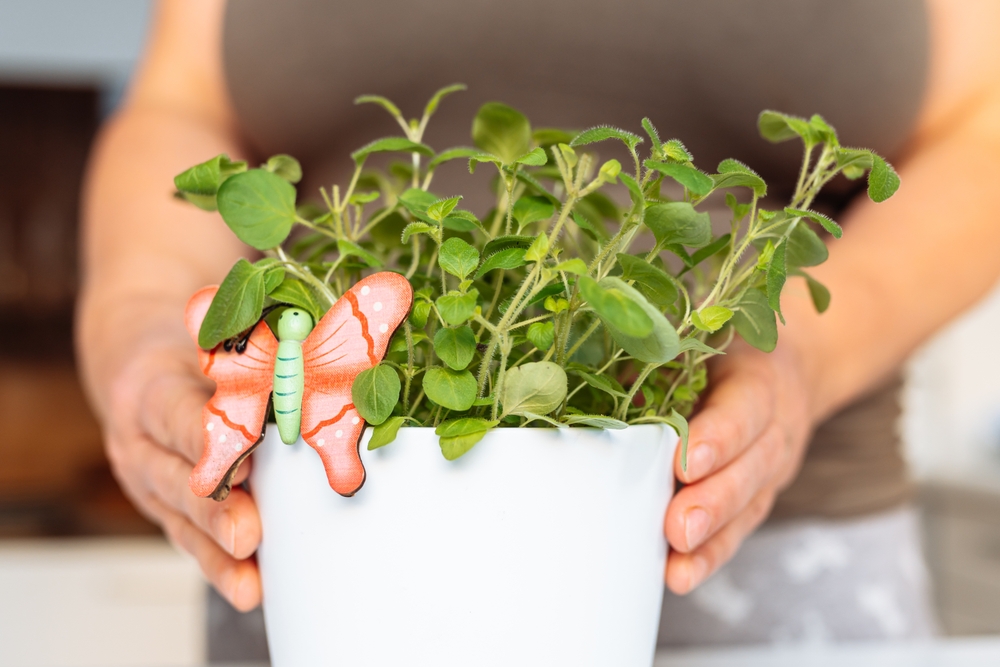
Oregano is a hardy, Mediterranean herb that grows well indoors once temperatures drop. Known for its bold, aromatic flavor, oregano is a great herb to have on hand for making Mediterranean dishes, Italian cuisine, or adding flavor to soups and sauces. When growing oregano indoors, place it in a sunny spot, ideally receiving at least six hours of direct sunlight a day. A south-facing window works best for this herb, ensuring it gets the sunlight it needs to stay healthy.
Oregano prefers well-drained soil, and it’s important not to overwater it. Allow the top layer of soil to dry out between waterings, as this herb thrives in slightly drier conditions. It’s also a good idea to avoid placing oregano in a humid area of your home, as it can be susceptible to fungal diseases. While oregano can survive in a variety of indoor conditions, it grows best in temperatures ranging from 60 to 70 degrees Fahrenheit. As the plant matures, trim back the stems to encourage new growth, and use the fresh leaves to add flavor to your favorite dishes throughout the winter months.
Thyme
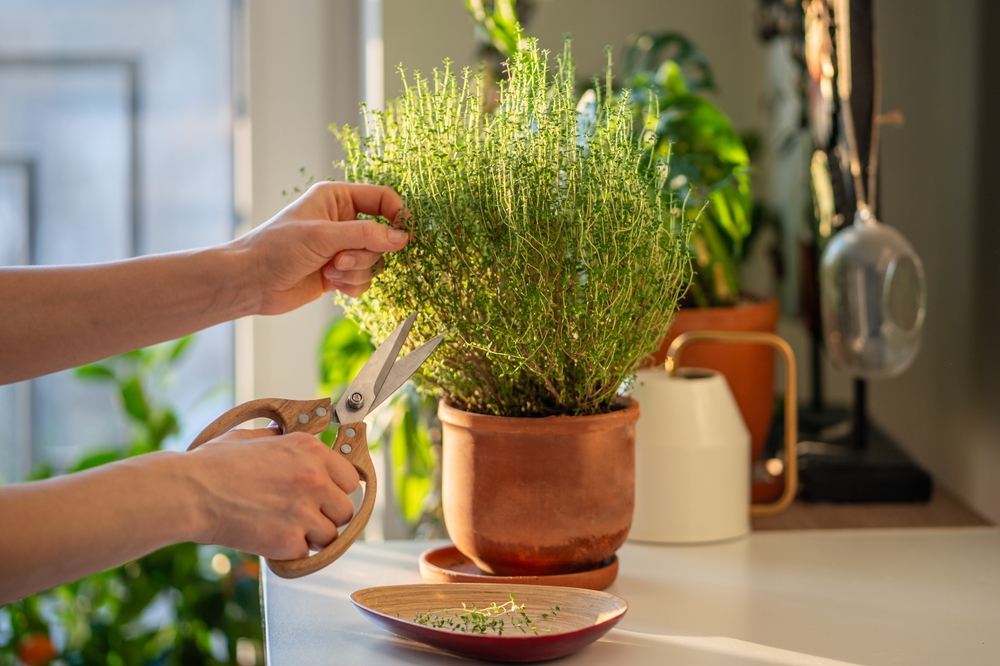
Thyme is a low-maintenance herb that is perfect for indoor gardening once the outdoor temperatures cool down. With its earthy, slightly sweet flavor, thyme pairs well with a wide variety of savory dishes, including roasted meats, soups, and sauces. Growing thyme indoors is relatively simple, and it thrives in well-drained soil with plenty of sunlight. Place it in a sunny spot, such as a south-facing windowsill, where it can get around six hours of light each day. This herb is not very demanding when it comes to water, so make sure the soil dries out slightly between waterings to prevent it from becoming waterlogged.
Thyme grows best in temperatures between 60 to 70 degrees Fahrenheit, which makes it ideal for indoor conditions during the colder months. It does not need constant attention but benefits from occasional pruning to keep it compact and healthy. Thyme also works well in smaller pots, making it a convenient herb to keep in your kitchen for easy access. You can harvest the leaves regularly to use fresh, or dry them for later use. By bringing thyme indoors, you can enjoy its flavor all year round.
Rosemary
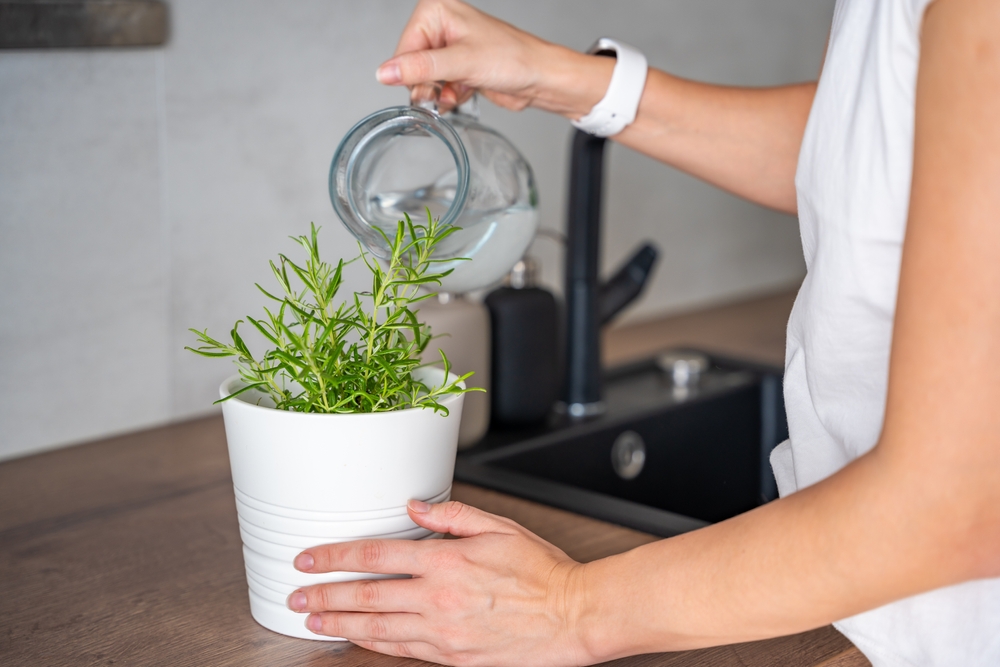
Rosemary is a fragrant, woody herb that adds a lovely depth of flavor to many dishes, particularly meats, breads, and roasted vegetables. When the weather turns cold, rosemary can be easily brought inside to continue thriving throughout the winter months. This herb prefers a location with plenty of sunlight, so place it on a sunny windowsill where it can get at least six hours of sunlight a day. It also requires well-drained soil, as it does not tolerate standing water, so ensure the pot has good drainage.
Rosemary thrives in temperatures between 60 to 70 degrees Fahrenheit, so indoor conditions are often perfect for this herb during colder months. It’s important not to overwater rosemary, as it prefers drier conditions compared to other herbs. Water it when the top layer of soil feels dry, and be sure to allow the water to drain completely. You can use fresh rosemary throughout the winter to flavor meats, stews, and vegetables, or dry the sprigs for longer-term use. Rosemary can also add a pleasant aroma to your home, making it a wonderful herb to keep indoors.
Sage

Sage is a hardy, evergreen herb that’s perfect for growing indoors during the cooler months. Its strong, earthy flavor is a great addition to savory dishes such as sausages, stuffing, and roasted meats. Sage prefers well-drained soil and a location with plenty of sunlight. A south-facing windowsill is ideal, as it will provide the bright, indirect light that sage needs to grow. This herb also does well in moderate temperatures, so it will be comfortable indoors during the fall and winter.
Sage does not require much water but benefits from occasional watering when the top layer of soil feels dry. Be cautious not to overwater, as sage is susceptible to root rot in soggy conditions. Pruning the plant occasionally helps encourage new growth and keeps it from becoming leggy. Sage is a versatile herb that you can use fresh in your cooking or dry for long-term storage, allowing you to enjoy its flavor year-round.
Bay Leaves
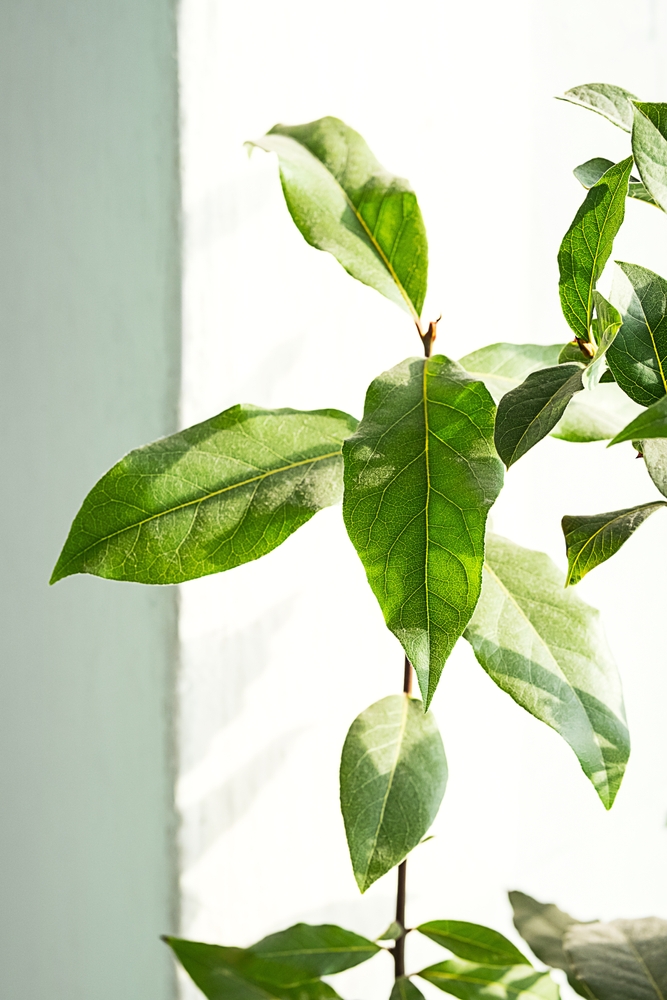
Bay leaves are a staple in many kitchens, known for their ability to add depth and flavor to stews, soups, and slow-cooked dishes. While bay laurel trees are typically grown outdoors, they can be successfully grown indoors in pots during the cooler months. Bay leaves require a spot with bright, indirect sunlight for at least six hours a day. A sunny windowsill or a well-lit countertop will provide the light necessary for the plant to thrive indoors.
This herb requires well-drained soil and should be watered regularly, allowing the top layer of soil to dry out between waterings. Bay leaves can tolerate a variety of temperatures but prefer cooler indoor environments, typically around 60 to 70 degrees Fahrenheit. To maintain a healthy plant, prune it periodically to encourage new growth and prevent it from becoming too leggy. You can harvest the bay leaves as needed, and they can be used fresh or dried in a variety of dishes.
Cilantro
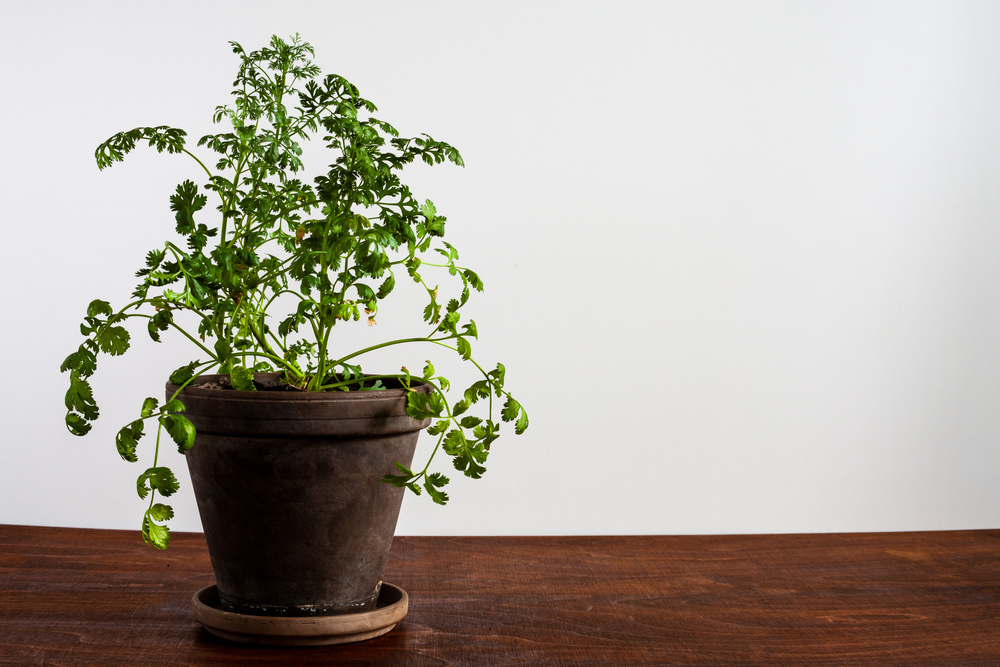
Cilantro is a vibrant herb that can add a fresh, citrusy flavor to a variety of dishes, such as salsas, curries, and salads. It’s perfect for growing indoors once the weather becomes colder, as it thrives in moderate temperatures. Cilantro prefers a sunny spot with at least four to five hours of sunlight a day, making it ideal for a bright windowsill or a well-lit countertop. It’s essential to give cilantro enough space to grow, so plant it in a pot that’s large enough to accommodate its roots.
Cilantro needs regular watering, but it should never sit in waterlogged soil. It grows best in slightly moist soil, so be sure to water when the top layer starts to dry out. While cilantro is a fast-growing herb, it has a relatively short lifespan, and it will bolt (go to seed) when the weather becomes too warm. By growing it indoors during the colder months, you can enjoy a steady supply of fresh leaves before it bolts, and you can also harvest the seeds (coriander) for later use.
Lemongrass
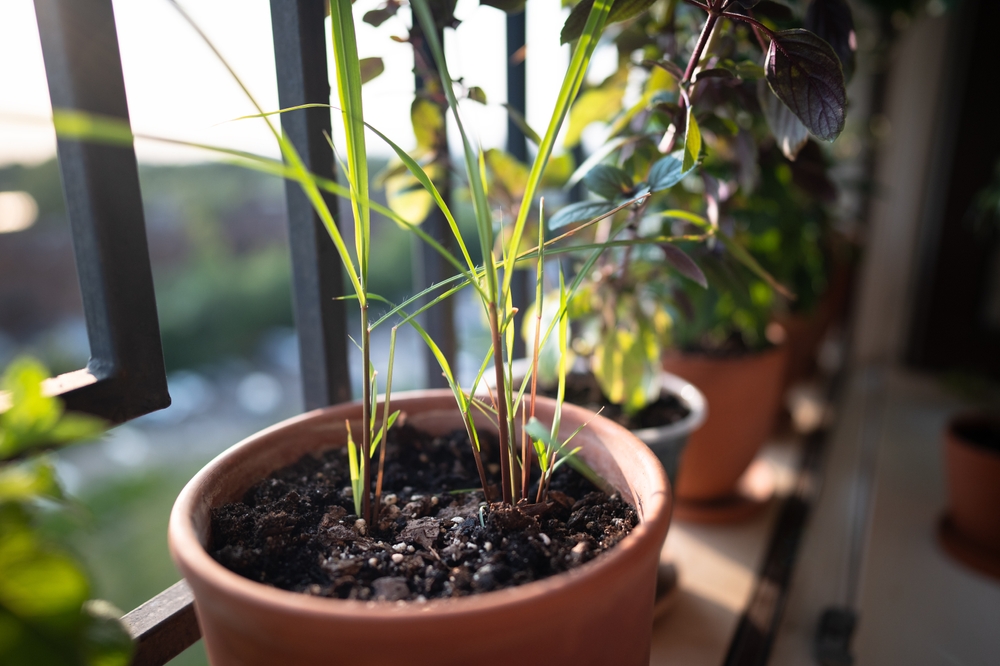
Lemongrass is a fragrant herb that is often used in Thai and Southeast Asian cuisine, lending a bright, citrusy flavor to dishes like curries, soups, and teas. It’s an excellent choice for indoor gardening once the outdoor temperatures drop because it thrives in warm, humid conditions. If you want to grow lemongrass indoors, place it in a sunny spot where it can get at least six hours of sunlight per day. A south-facing windowsill is ideal for this herb, as it will provide the energy it needs to grow tall and healthy.
Lemongrass requires well-drained, slightly acidic soil and should be watered regularly. Ensure the soil is moist, but not soggy, as lemongrass is susceptible to root rot if left in overly wet soil. This herb grows best in warm indoor temperatures, ideally between 70 to 80 degrees Fahrenheit. Lemongrass can grow quite large, so make sure the pot you choose provides enough room for its root system. With proper care, lemongrass can thrive indoors, providing a steady supply of fresh, flavorful stalks for your cooking.
This article originally appeared on Avocadu.
